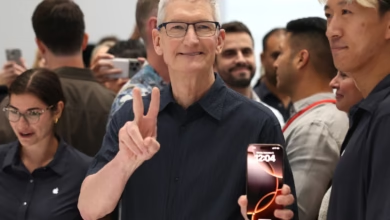Neuralink’s Prime Study: [The Link] has helped me reconnect with the world

Who is Neuralink? and What is its mission?
Neuralink is an American neurotechnology company that is developing implantable brain–computer interfaces (BCIs), based in Fremont, California, as of 2022. The company was founded by Elon Musk and a team of seven scientists and engineers in 2016. Neuralink’s mission is to “’Create a generalized brain interface to restore autonomy to those with unmet medical needs today and unlock human potential tomorrow”.
When was the First Human Implant announced?
On January 29, 2024, Elon Musk announced that Neuralink had successfully implanted a Neuralink device in a human and that the patient was recovering well. Neuralink’s first product would be called Telepathy, he said in another post, adding that its initial users will be people who have lost the use of their limbs.
The neurotechnology company has started its first human trial since receiving approval from the U.S. Food and Drug Administration in 2023. The trial’s focus is on an implant that could potentially allow people with severe physical disabilities to control digital devices using their thoughts. The study involves implanting a brain chip — called a brain-computer interface implant — in the region of the brain that controls movement intention.
This development is more than just a technical milestone; it represents a major leap in potential human-computer interaction, raising important questions about the integration of advanced technology with the human body and mind. The first human implant signals a new phase for human-computer interaction.
What is a Brain Computer Interface (BCI)?
A brain-computer interface (BCI) is a system that enables a direct communication pathway between the brain and an external device, such as a computer or a robotic limb. It acquires brain signals, analyzes them, and translates them into commands that are relayed to an output device to carry out desired actions.
BCIs can be used to help individuals with disabilities, such as paralysis, by allowing them to control devices using their brain signals.
This technology has the potential to revolutionize human-computer interactions and has applications in various fields, including medicine, rehabilitation, and national defense.

What Is the Neuralink Device?
The Neuralink device is a small, coin-shaped chip that is implanted into the brain. The chip is connected to a wearable device that sits behind the ear and communicates wirelessly with the chip. The device is designed to help people with paralysis or other neurological disorders to control digital devices using their thoughts. The device works by detecting electrical signals in the brain and translating them into digital commands that can be sent to a computer or other digital device.
Other Projects and Studies
In addition to the first human implant, Neuralink is also working on a number of other projects and studies. The company is developing a wireless implant that can be charged using a smartphone. This implant is designed to be used in the treatment of neurological disorders such as Parkinson’s disease and epilepsy. Neuralink is also working on a project to develop a brain implant that can be used to treat depression and other mood disorders.
The Future of Neuralink
The future of Neuralink is bright. The company is at the forefront of neurotechnology research and development, and its work has the potential to revolutionize the way we interact with technology. With ongoing research and development, it is likely that we will see even more exciting developments from Neuralink in the years to come.
Brain-computer interfaces have the potential to change lives for the better. We want to bring this technology from the lab into peoples’ homes.
– Neuralink
Is there any Ethical Considerations to take into account with the Neuralink Device?
As with any new technology, there are ethical considerations to be taken into account. The use of brain-computer interfaces raises important questions about privacy, security, and the potential for abuse. There are concerns that the technology could be used to invade people’s privacy or to control their thoughts and actions. There are also concerns about the potential for the technology to be used for military purposes, such as mind-controlled weapons.
Neuralink has stated that it is committed to ensuring that its technology is used ethically and responsibly. The company has established an ethics board to oversee its research and development, and it has pledged to work with regulators and other stakeholders to ensure that its technology is used in a safe and responsible manner.
Conclusion
In conclusion, Neuralink’s first human implant is a significant milestone for the field of neurotechnology and represents a major step forward in the development of brain-computer interfaces. The implant has the potential to revolutionize the way we interact with technology and has important implications for the treatment of neurological disorders. With ongoing research and development, it is likely that we will see even more exciting developments from Neuralink in the years to come. However, as with any new technology, there are ethical considerations to be taken into account, and it is important that we proceed with caution and responsibility.
February Update
Neuralink patient controls mouse
Elon Musk, the trailblazing founder of Neuralink, recently shared a significant milestone in brain-computer interface technology. The inaugural human participant, equipped with a Neuralink brain chip since January, has successfully controlled a computer mouse solely with their thoughts. Remarkably, the patient has fully recuperated from the implantation procedure without adverse effects. This trial is part of Neuralink’s mission to empower individuals with severe injuries to navigate computers through thought alone. While the patient’s identity remains confidential, Neuralink had previously expressed interest in participants with conditions like quadriplegia from spinal cord injuries or amyotrophic lateral sclerosis (ALS).
Musk highlighted that the current focus is on translating thought into as many computer commands as possible, such as moving a mouse cursor or interacting with screen elements. Neuralink aspires to restore functions like vision, movement, and speech for individuals who have lost these abilities. The initial beneficiaries of this technology are expected to be those with limb paralysis.
However, this groundbreaking advancement has not been without its critics. Some experts have voiced concerns over the lack of detailed public reporting on the experiment, emphasizing the ethical need for transparency to manage expectations for people with severe neurological conditions. In comparison, other companies in the brain-computer interface field, like Synchron, have been conducting similar trials since 2021 and are reportedly further along in their research.
Neuralink’s vision goes beyond just assisting paralyzed individuals with digital device control; they aim to facilitate connections between the human brain and computers, potentially aiding people with blindness in regaining sight. Their first product, dubbed ‘Telepathy’, is designed to enable users to control a computer cursor or keyboard using only their thoughts. Before this technology becomes widely accessible, Neuralink must navigate regulatory approvals and address safety concerns.
March Update
In an innovative demonstration of Neuralink’s brain-computer interface technology BCI, Noland Arbaugh, a 29-year-old quadriplegic due to a diving accident, showcased his ability to control a computer and engage in games like chess and Civilization VI using only his thoughts. This event marked a significant advancement for Neuralink, emphasizing the potential of their Telepathy product to revolutionize the way individuals with disabilities interact with electronic devices.
Arbaugh, who received Neuralink’s brain implant earlier this year, reported a smooth operation and a quick hospital discharge, expressing awe at his newfound capability, likening it to possessing “the force” from Star Wars. The demonstration vividly highlighted the technology’s promise but also underscored the necessity for further refinement and raised questions regarding the trial’s transparency and the detailed outcomes measured.
As Neuralink continues to navigate the complexities of integrating technology with the human brain, this milestone represents a hopeful glimpse into a future where barriers for those with paralysis and other disabilities are significantly reduced, offering them more autonomy and control over their lives.
For more detailed coverage, visit the original articles at watcher.guru, uk.news.yahoo.com, ainewsworld.org, mashable.com, and finance.yahoo.com.
May Update
[The Link] has helped me reconnect with the world, my friends, and my family. It’s given me the ability to do things on my own again without needing my family at all hours of the day and night.
Noland Arbaugh, PRIME Study participant
Since the groundbreaking implantation of Neuralink’s brain-computer interface (BCI) in January 2024, the first participant in the PRIME study has experienced profound changes in his daily life. This pioneering technology has not only addressed the challenges of quadriplegia but also opened up new avenues of interaction and independence for the participant.
Technological Insights and Surgical Precision
The core of this technology, the N1 Implant, incorporates 1,024 electrodes on 64 ultra-thin threads, delicately inserted into the brain by the R1 Robot. This precision ensures targeted brain activity monitoring and interaction, minimizing the risk while maximizing functionality.
Overcoming Post-Implantation Obstacles
Post-surgery, the participant faced challenges typical of pioneering medical technologies. Initial difficulties included minor discomfort at the implant site and temporary disruptions in signal clarity, which were addressed through adjustments in the calibration of the device. Neuralink’s team, in collaboration with the Barrow Neurological Institute, provided continuous support, monitoring the implant’s performance and making necessary refinements to enhance the user experience.
These interventions are crucial for ensuring the participant’s comfort and the functionality of the BCI system, highlighting the iterative nature of such advanced technological applications.
Clinical Progress and Future Directions
Despite these challenges, the participant’s recovery was smooth, with no significant long-term complications, setting a positive precedent for future trials. Neuralink is now focused on scaling up the PRIME study, aiming to include more participants and broaden the potential applications of their technology.
On weekdays, Noland contributes to research sessions for up to 8 hours per day. Participation in research sessions allows BCI team to evaluate the performance of [the Link]. The standard measure for speed and accuracy of cursor control is bits-per-second (BPS), calculated using a grid task. Higher BPS values indicate better cursor control. During his first-ever research session, Noland set a new world record for human BCI cursor control of 4.6 BPS. He has subsequently achieved 8.0 BPS and is currently trying to beat scores of the Neuralink engineers using a mouse (~10 BPS). [The Link] is able to distinguish left and right clicks and allows cursor control sufficiently precise to select targets similar in size to the smallest icons and buttons on a laptop screen. The ability to select small targets using multiple click types allows Noland to use applications and play games on his laptop that were not possible with his mouth stick.”
A Day in the New Life of the Participant
The biggest thing with comfort is that I can lie in my bed and use [the Link]. Any other assistive technology had to have someone else help or have me sit up. Sitting causes stress mentally and on my body which would give me pressure sores or spasms. It lets me live on my own time, not needing to have someone adjust me, etc. throughout the day
Noland Arbaugh, PRIME Study participant
Before the implant, the participant’s interaction with the digital world was significantly restricted due to his quadriplegia. Simple tasks such as sending an email, browsing the internet, or even playing a video game were daunting if not impossible without extensive assistance. Now, equipped with the Neuralink BCI, he can perform these tasks independently using his thoughts to control digital interfaces.
For example, playing strategic games like Sid Meier’s Civilization VI, which once required physical manipulation of controls, is now accessible through direct neural commands. This newfound capability is not just about leisure; it extends to essential daily activities. The participant can now operate home automation systems, communicate more freely through text, and explore the internet without physical limitations. This shift towards digital autonomy has significantly reduced his dependency on caregivers for everyday digital interactions.
I thought that the mouth stick was a lot better than BCI a month ago, when we compared them I saw that BCI was just as good if not better and it’s still improving; the games I can play now are leaps and bounds better than previous ones. I’m beating my friends in games that as a quadriplegic I should not be beating them in.
Noland Arbaugh, PRIME Study participant
Life-Changing Impacts and Personal Autonomy
The most significant change for the participant has been the restoration of a sense of control and independence. Previously, simple desires such as turning on the lights or adjusting the thermostat required external help. Now, these can be managed independently, giving back the participant a level of personal autonomy that many take for granted.
The implant has also reconnected him with his social circles and professional interests, reducing the isolation often experienced by those with severe mobility impairments. His ability to interact and communicate via social media and other online platforms has brought him back into the community and workplace conversations.
Future Prospects and Continued Development
As Neuralink continues to refine their technology, the focus remains on enhancing the user experience and expanding the potential applications of their BCI. The ongoing feedback from the participant is invaluable, driving iterative improvements that benefit current and future users of this technology.
Neuralink’s BCI technology represents a monumental leap towards integrating advanced neurotechnology with everyday life, fundamentally changing the landscape for individuals with disabilities. As the PRIME study progresses, the experiences of its participants will continue to inform and inspire developments in this exciting field.
The journey of Neuralink’s first human implant participant vividly illustrates the transformative impact of BCI technology, showcasing a profound shift from dependency to autonomy and engagement in a digital world.






